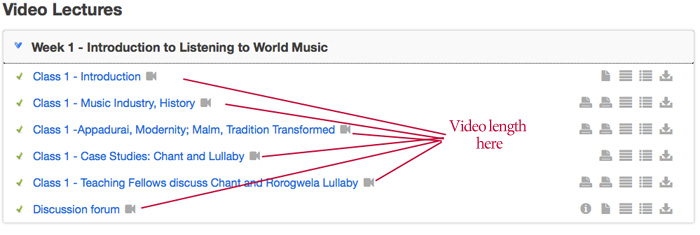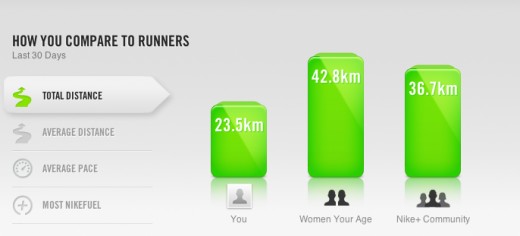A facebook conversation from yesterday encouraged me to share one of the assignments that I developed for my instructional design course. The goal of the class is for the students to understand, experience, and apply instructional design in a variety of educational contexts.
One of the assignments I developed for asked students to enroll in a Massive Open Online Course (MOOC) and analyze the instructional materials within the course using one of the rubrics provided by Dick and Carey (the instructional design book we use in class). It was a lot of fun and the students appreciated the exercise. Given the lack of presence and voice by instructional designers in MOOC happenings, the lack of valid, reliable, and serious research that exists on the topic (though Rita Kop’s work on cMOOCs is admirable), and my desire to engage students in contemporary events, I came up with this assignment to embed MOOC analysis in my course. The assignment is available for download on and posted below for those who just want to skim it without downloading it. Enjoy and feel free to use it:
Instructional Material analysis assignment
Individually, you will examine and report on the instructional materials of one popular digital learning initiative. An analysis matrix will be provided to you, and you will use that to matrix to evaluate these initiatives.
Length: Minimum 500 words.
| Criteria |
Levels of Attainment |
Points |
| Written analysis (evaluation) |
- Evaluation adheres to the matrix, is thoughtful, and presents evidence of original thought
- Evaluation does not adhere to the matrix or is superficial on various levels
|
87-0 |
| Rubric completion |
- Learner completes and submits the rubric for evaluating instructional materials (p. 250-251) for his/her selected initiative.
|
2 |
This task requires a few hours of research before you can actually complete it. Even though this is an individual task, if you would like to discuss the assignment with any of your colleagues, please feel free to do so.
Mechanics
First read the chapter and the rest of the materials for this week. Without reading those, I can assure you that your understanding of the issues presented will be superficial.
Second, examine the rubric provided by Dick & Carey for evaluating instructional materials (p. 250-251 – see below for the rubric). You will be completing this rubric for a digital environment, and it’s a good idea to understand what it encompasses before you proceed.
Third, select one course provided on one of the following platforms to examine:
- A course on Coursera (select a course that is occurring right now or has been completed. DO NOT select a course that has not started yet): https://www.coursera.org/courses
- A course on EdX (select a course that is occurring right now. DO NOT select a course that has not started yet): https://www.edx.org/courses
You can also choose to examine DS106: http://ds106.us/ I am including DS106 on its own because it is a course as opposed to the above (Coursera, EdX, and Udemy) which are platforms. If you pick any of these three (Coursera, EdX, or Udemy), then you should also pick a course (e.g., Within Coursera a possible course is https://www.coursera.org/course/friendsmoneybytes).
Assignment
Once you have made your selection, it’s time to research your course. Spend time looking around, examining and evaluating the instructional materials provided. You will use the rubric to keep track of the criteria that need to be assessed, and then using this rubric you will write a report assessing the instructional material for the course.
You should start your report by stating the course and its provider. A link would also be helpful. For example, using the example above, I would start my report by stating the following:
“I am examining the course entitled Networks: Friends, Money and Bytes (https://www.coursera.org/course/friendsmoneybytes). This course if offered through Coursera and is taught by Mung Chiang who is a Professor or Electrical Engineering at Princeton University. The course is an introduction to the topic of X and its objectives are XYZ.”
Your report should be specific and detailed in its evaluation of instructional material, and should be guided by the five criteria families discussed by DC: Goal-centered, learner-centered, learning-centered, context-centered, technical criteria. I would like to see that you understand each criterion and that you are capable of applying it to evaluating your course. For example, at the very least, I would expect to see statements such as the following:
Instructional designers use five criteria families to evaluate instructional materials. Learner-centered criteria focus on XYZ and refer to X. The instructional materials for this course appear to be adequate for this criterion because <provide list of reasons here>. The course could be improved in this domain by <list of additions/revisions here>. However, because item X was not disclosed in the course, I am not able to evaluate Y.
Let me reiterate that to complete this assignment you will need to do background research on the course and the platform. For example, your background research on Coursera will reveal that some of these courses have more than 80,000 students from around the world. This fact alone will impact your evaluation!
Instructional Material Evaluation Rubric
Rubric is copyright of: Dick, W., Carey, L. & Carey, J. (2008). Systematic Design of Instruction, (7th ed.) Upper Saddle River, NJ: Pearson.
A. Goal-centered Criteria:
Are the instructional materials:
|
Yes |
No |
Some |
| 1. Congruent with the terminal and performance objectives? |
|
|
|
| 2. Adequate in content coverage and completeness? |
|
|
|
| 3. Authoritative? |
|
|
|
| 4. Accurate? |
|
|
|
| 5. Current? |
|
|
|
| 6. Objective in presentations (lack of content bias)? |
|
|
|
Learner-centered Criteria:
Are the instructional materials appropriate for learners’: |
Yes |
No |
Some |
| 1. Vocabulary and language? |
|
|
|
| 2. Development level? |
|
|
|
| 3. Background, experience, environment? |
|
|
|
| 4. Experiences with testing formats and equipment? |
|
|
|
| 5. Motivation and interest? |
|
|
|
| 6. Cultural, racial, gender needs (lack bias)? |
|
|
|
Learning-centered criteria
Do the material include: |
Yes |
No |
Some |
| 1. Pre-instructional material? |
|
|
|
| 2. Appropriate content sequencing? |
|
|
|
| 3. Presentations that are complete, current and tailored for learners? |
|
|
|
| 4. Practice exercises that are congruent with the goal? |
|
|
|
| 5. Adequate and supportive feedback? |
|
|
|
| 6. Appropriate assessment? |
|
|
|
| 7. Appropriate sequence and chunk size? |
|
|
|
Context-centered Criteria
Are/do the instructional materials: |
Yes |
No |
Some |
| 1. Authentic for the learning and performance sites? |
|
|
|
| 2. Feasible for the learning and performance sites? |
|
|
|
| 3. Require additional equipment/tools? |
|
|
|
| 4. Have congruent technical qualities for planned site (facilities/delivery system)? |
|
|
|
| 5. Have adequate resources (time, budget, personal availability and skills)? |
|
|
|
Technical criteria
Do the instructional materials have appropriate: |
Yes |
No |
Some |
| 1. Delivery system and media for the nature of objectives? |
|
|
|
| 2. Packaging? |
|
|
|
| 3. Graphic design and typography? |
|
|
|
| 4. Durability? |
|
|
|
| 5. Legibility? |
|
|
|
| 6. Audio and video quality? |
|
|
|
| 7. Interface design? |
|
|
|
| 8. Navigation? |
|
|
|
| 9. Functionality? |
|
|
|






